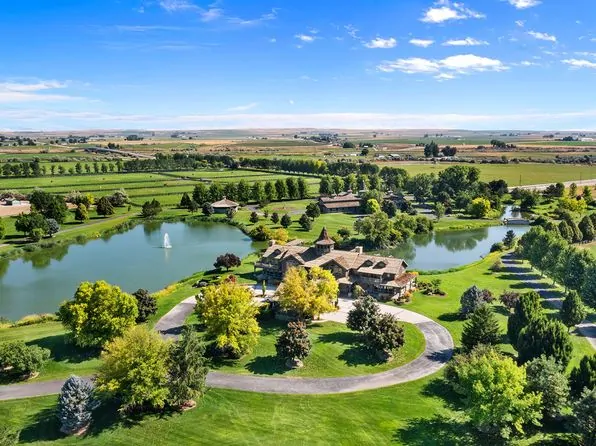A Complete Guide to Visiting Monet’s Gardens in Giverny, France: Tips, Timing, and More

Monet’s Gardens in Giverny, France, are a must-see destination for art lovers, nature enthusiasts, and anyone who appreciates the beauty of France’s countryside. Claude Monet, one of the founders of Impressionism, lived in Giverny for over 40 years, and it was here that he created some of his most famous works. His gardens, both the flower garden in the front and the water garden at the back, are nothing short of breathtaking. Whether you’re a first-time visitor or a seasoned traveler, this guide will provide you with everything you need to make the most of your visit to Monet’s Gardens in Giverny.
Why Visit Monet’s Gardens in Giverny?
Claude Monet’s gardens are a living masterpiece. Located in the heart of the Normandy region, the gardens are where Monet drew inspiration for his iconic Water Lilies series and other masterpieces. The gardens are divided into two main sections: the Flower Garden (Clos Normand) and the Water Garden (Jardin d’Eau), each offering a distinct and unique visual experience.
- Pro Tip: Monet’s Gardens are not just about viewing beautiful flowers and water. They are also a step into the artist’s creative world. You can walk through the same spaces where Monet spent countless hours capturing light, color, and reflections.
Best Time to Visit Monet’s Gardens
The best time to visit Monet’s Gardens is during the spring and summer months when the flowers are in full bloom. From April to October, the gardens are open to the public, with the peak bloom occurring from May to June. During this period, you’ll experience the gardens in their full glory, with vibrant colors, lush greenery, and the iconic water lilies in bloom.
- Pro Tip: For a quieter experience, try visiting early in the morning or later in the afternoon. The midday crowds can get large, especially during peak tourist season (July and August).
Flower Garden (Clos Normand)
The Flower Garden in front of Monet’s house is a riot of colors, designed to showcase flowers in a naturalistic way. Monet meticulously designed this garden with a variety of vibrant flowers, such as tulips, irises, poppies, and roses, to create an ever-changing palette of hues.
- Highlight: The famous wisteria-covered trellis near the house is one of the most photographed parts of the garden, especially when the wisteria blooms in the spring.
Water Garden (Jardin d’Eau)
The Water Garden is perhaps the most iconic part of Monet’s home. With its serene pond, water lilies, and the famous Japanese bridge, this section of the garden was the inspiration for many of Monet’s famous paintings.
- Did you know? The water lilies that float on the pond are not only a source of inspiration for Monet but also symbolize peace and tranquility in his work. Monet famously painted the lilies at different times of the day to capture the changing light and reflections.
How to Get to Monet’s Gardens in Giverny
By Car:
If you’re driving from Paris, Giverny is about a 1.5-hour drive (approximately 75 kilometers) via the A13 motorway. There is parking available near the entrance to the gardens.
- Pro Tip: Make sure to check the route in advance to avoid getting lost in the countryside. There are clear signs from the highway guiding you to Giverny.
By Train:
You can also take a train from Paris Saint-Lazare Station to Vernon, a town near Giverny. The train ride takes about 45 minutes, and from the Vernon station, there is a shuttle bus or a short taxi ride to the gardens (around 4 km).
- Pro Tip: If you plan on taking the train, be sure to check the schedule ahead of time as the shuttle bus from Vernon to Giverny operates at specific times.
By Guided Tour:
If you prefer not to navigate independently, there are several guided tours from Paris that include transportation and a tour of Monet’s Gardens. This is a great option if you want to learn more about the history of the gardens and Monet’s life.
What to Expect During Your Visit
When you arrive at Monet’s Gardens, you’ll be greeted by a beautifully maintained property that transports you into the world of the famous artist. Here’s what you can expect during your visit:
Monet’s House:
Monet’s home is also open for visits. The interior of the house has been restored to look as it did during his time there, with bright yellow walls, floral wallpapers, and beautiful furniture. You can also see some of Monet’s personal collection of Japanese prints and other artwork.
The Gardens:
The gardens are divided into sections, and you can explore both the flower garden and the water garden. The paths are lined with hedges and flowers, offering plenty of opportunities for photography. You will also find small benches where you can sit and enjoy the tranquil surroundings.
- Pro Tip: The water lilies are the stars of the Water Garden, so be sure to take a moment to appreciate them, particularly the large Japanese Bridge and the lily-covered pond.
The Gift Shop:
After your visit to the gardens, you can stop by the gift shop for a variety of souvenirs, including prints of Monet’s famous water lilies, gardening tools, and French-style home décor. The shop offers items that make great gifts or personal mementos of your visit.
Nearby Attractions and Restaurants
While Monet’s Gardens is a major highlight, there are several other attractions and places to eat nearby that make for a full day in Giverny.
Nearby Attractions:
- Musée des Impressionnismes Giverny: This museum is dedicated to the Impressionist movement and is located near Monet’s home. It hosts temporary exhibits on Impressionism and its influence, offering visitors a deeper understanding of the style that Monet helped to define.
- Château de Gaillon: Located 15 minutes from Giverny, this Renaissance-style castle is a historic site that offers a glimpse into France’s royal past and is a beautiful spot for a walk through the gardens and architecture.
Restaurants and Dining:
- Les Nympheas: Located just a few steps from Monet’s Gardens, Les Nympheas is a charming restaurant serving traditional French cuisine. The atmosphere is warm and inviting, perfect for a relaxing lunch after touring the gardens.
- La Musardière: For a more casual dining experience, head to La Musardière, a restaurant known for its Normandy specialties, including duck confit and local cider.
- Pro Tip: If you prefer a picnic, there are many beautiful spots around the gardens and nearby parks where you can enjoy a packed lunch with views of the lush countryside.
What to Bring and Pro Tips
- Comfortable Shoes: You’ll be walking through the gardens, so comfortable shoes are essential.
- Camera: Monet’s Gardens are a photographer’s paradise, so be sure to bring a camera or your smartphone to capture the beauty of the flowers, water lilies, and scenery.
- Sun Protection: If you visit in the summer, bring sunscreen and a hat, as much of the garden is exposed to the sun.
- Water Bottle: Stay hydrated, especially during the warmer months.
Conclusion
A visit to Monet’s Gardens in Giverny is a magical experience that allows you to step into the world of one of the greatest artists of all time. The gardens, filled with vibrant flowers and serene water lilies, offer a perfect setting to appreciate the beauty of nature and the legacy of Claude Monet. Whether you’re an art lover, a history buff, or simply someone who enjoys stunning landscapes, Monet’s Gardens should be on your must-see list in France.
FAQs
Q1: How long does it take to visit Monet’s Gardens?
A1: On average, visitors spend about 2-3 hours exploring the gardens and house, though you may want to spend longer if you enjoy photography or wish to learn more about the history of the site.
Q2: Is Monet’s Garden accessible for people with mobility issues?
A2: While parts of the gardens are accessible, some areas, such as the water garden, may be difficult for those with limited mobility. It’s best to check ahead for specific accessibility information.
Q3: Are there any guided tours available?
A3: Yes, there are guided tours available that provide detailed explanations of the gardens and Monet’s life. You can book tours in advance online or at the site.
Q4: Can I visit Monet’s Gardens in the winter?
A4: Monet’s Gardens are typically closed during the winter months (November through March). The best time to visit is during the warmer months, from April to October, when the gardens are in full bloom.
Q5: How can I get to Giverny from Paris?
A5: Giverny is about a 1.5-hour drive from Paris, or you can take a train from Paris Saint-Lazare Station to Vernon, followed by a short bus or taxi ride to the gardens.












